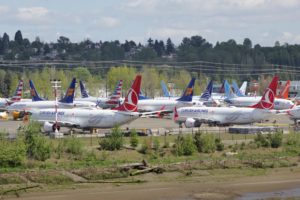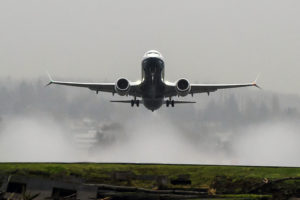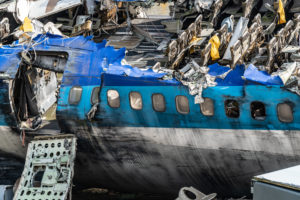Words by Paul Willis
Boeing’s problems with the 737 Max 8 can be traced back to poor management and political decisions that call into question fundamental aspects of the certification process.
The worldwide grounding of the 737 Max following two fatal crashes in less than five months may turn out to be the worst crisis in Boeing’s 104-year history. The aircraft was removed from service in March 2019 after an automated featured known as the Maneuvering Characteristics Augmentation System (MCAS) was implicated in the crashes of a Lion Air flight in Indonesia and an Ethiopian Airlines jet in Ethiopia.
The grounding of its best-selling plane has hit the US-aircraft maker hard. Costs are likely to surpass US$18 billion, almost 20% of Boeing’s annual sales. While the long term damage to its brand remains to be seen, the company’s own research shows that 40% of regular travelers are unwilling to fly on the Max.
But other reputations have been tarnished by the crisis. In the wake of the groundings media reported that there had been lapses in the aircraft’s certification process and called in to question the Federal Aviation Authority’s (FAA) oversight role.
The agency was accused of handing too much control of the certification process to Boeing as the aircraft maker raced to get the 737 Max to market and of not taking sufficient time to fully understand the automated system that contributed to the crash. In a statement the FAA insists that it has “never allowed companies to police themselves or self-certify their aircraft” and that “FAA experts, including chief scientists, engineers and flight test pilots, conducted in-flight testing of the flight control system, including the MCAS.”
A question of competency

Undelivered Boeing 737 Max aircraft stored near Boeing Field in Seattle, Washington
A report into the Max’s certification published last October by the Joint Authorities Technical Review (JATR) panel, an international team of safety experts headed by the former head of the US National Transportation Safety Board (NTSB), found that the FAA had “inadequate awareness of the MCAS function” and “limited involvement”, which resulted in “an inability of the FAA to provide an independent assessment of the adequacy of the Boeing proposed certification activities associated with MCAS.”
If the JATR’s assertions are true, how did it get to this point, where the overseeing agency was incapable of assessing key components on the aircraft it was meant to certify?
According to aviation consultant Dr Michael Dreikorn “a perfect storm” of circumstances are responsible, not least of which is a decline in standards at the agency.
“The FAA allowed its competencies at the management and technical levels to become sub-standard,” says Dreikorn, a former FAA official and current principal partner at ASD Experts, an aviation consulting firm based in Florida. “They don’t employ the most experienced individuals in the industry.”
As a result, he says the agency is unable “to push back intelligently on issues.”
One such issue may have been Boeing’s preference to keep out mentions of the MCAS system from the 737 Max pilot manuals, a preference that the FAA green-lighted in a move that the agency’s then-acting administrator admitted was misguided in a hearing in the US Congress last May.
Other industry experts support Dreikorn’s claim of a decline in standards. Whistleblower testimony published in a presidential report in September 2019 by the US Office of Special Counsel alleges that some FAA safety inspectors were not sufficiently qualified to “certify pilots or to assess pilot training” for aircraft including the 737 Max.
System change

Boeing’s 737 Max 8 was certified by the FAA in 2017, the airplane is seen here taking off over Lake Washington (Photo: Matthew Thompson/Boeing)
Another aspect of the certification process singled out for blame in the fallout from the Max crisis is Organizational Designation Authorisation (ODA), an FAA program introduced in 2005 that means aircraft makers can certify parts of their own designs with limited FAA oversight.
Delegating certification responsibilities to aircraft manufacturers has long been common practice in the aviation industry throughout the world. The sheer scope and complexity of aircraft means that government regulators lack the resources to carry out all of the certification themselves.
Rachel Daeschler, certification director at the European Aviation Safety Agency (EASA) says, “The design of a large commercial aircraft requires thousands of highly skilled engineers… it would require at least as many engineers to check in detail what they do.”
Before 2005 the FAA delegated certification responsibilities to select employees of the aircraft manufacturers called Designated Engineering Representatives (DERs).
Under the ODA program aircraft manufacturers, primarily Boeing have the authority to appoint their own delegates. This loss of regulatory oversight has raised concerns within government, despite it being the US Congress that had mandated the FAA to create the ODA. The US Transportation Department’s watchdog, the Office of the Inspector General (OIG), conducted two separate audits of the ODA in 2011 and 2015. The OIG raised numerous concerns in the audits, including that the FAA was not adequately prioritizing oversight of “the highest-risk areas.”
In the summary of its 2011 audit the OIG, which is currently conducting another audit in the light of the Max crisis, found that “under the ODA program, FAA has significantly limited its role in approving individuals who perform work on FAA’s behalf by delegating this approval to private companies.”
Deregulation
According to Stan Sorscher, a labour representative at the US Society for Professional Engineering Employees in Aerospace (SPEEA) and a former Boeing employee for 20 years, the most pernicious effect of the ODA program was that it diminished the authority of technical staff. The ODA system “isolated certification engineers” he says, by removing their direct channel of communication to the FAA, resulting in “a loss of negotiating power”.
“The DERs were in a position to tell a meeting what the FAA is and is not going to allow and that would be the end of it,” says Sorscher. “Under ODA the applicant, in this case Boeing, effectively creates a mirror version of the FAA within its own organization. So, most of the problem resolution happens solely on Boeing’s side.”
Sorscher believes that the ODA system makes it more likely that the concerns of certification engineers within an organization are sidelined by the overall momentum of a development program. In addition, when a problem cannot be resolved in-house and needs FAA input, Boeing’s technical staff are separated from the FAA’s technical staff by a tier of management on both sides. This means that it’s not unlikely that a technical issue raised at Boeing might not ever reach the FAA technical staff and instead “be resolved entirely at the managerial level”.

The wreckage of a Boeing 747 on the ground– there have been 15 fatal crashes involving 747s since its entry into service in 1989 (Photo: Daniel – stock.adobe.com)
Dreikorn says, “The FAA delegated oversight of the inspection. It’s just too many degrees of separation.”
According to Sorscher, getting a handle on what has gone wrong with the ODA program involves an understanding of the forces that first brought it into existence. As a labour representative Sorscher was part of the stakeholder transition team that managed Boeing’s switch to ODA.
“ODA was part of a philosophy that wanted to get government out of the way, and let industry solve its own problems,’” says Sorscher. “This same deregulation happened at the Securities and Exchange Commission, at the Food and Drug Administration and the Department of Agriculture.”
Around the time of the ODA’s introduction there was also a change in the workplace culture at Boeing that compounded the problem, claims Sorscher.
“When I began at Boeing it was a collaborative workplace,” he says. “There was an expectation that you would sacrifice your narrow set of interests for the overall well-being of the program, and I saw this happen over and over again.”
Sorscher believes a close examination of media reports of the interactions between Boeing staff during the Max certification process reveals clear examples of them “coordinating badly” with each other.
Culture change
Dreikorn believes there was a change in the culture at Boeing after the move of its headquarters from its Seattle manufacturing base in 2001. “Boeing lost its aerospace core when it moved from Seattle to Chicago and became a capital investment company, as opposed to an aircraft maker,” says Dreikorn. “From then on the signals from on high were that the organization was more about profit and schedule as opposed to technology and safety.”
The financial hit Boeing has taken because of the Max groundings has shaken up the aircraft maker’s management enough to reexamine the workings of its business. The company is trying to address its mistakes. With the ouster of CEO Dennis Muilenburg in December there has been a change in tone, with new boss Dave Calhoun acknowledging the firm has been its “own worst enemy” and admitting that the Max crisis has shaken confidence in the company among Boeing staff.
Boeing did not respond to requests for comment on this article but said in a recent statement that “the ungrounding of the 737 Max will begin during mid-2020”. But ultimately this is in the hand of the FAA and other regulators. Meanwhile Dreikorn believes the best outcome of the crisis would be a return to a certification process where delegates are chosen by the FAA, returning the responsibility to individuals rather than the entire company. “Because when everybody is accountable, nobody is accountable,” he says.
This article was originally published in the March 2020 issue of Aerospace Testing International magazine. View in its original format here. Subscribe to the quarterly magazine for free here and to the weekly newsletter here.
"Max" - Google News
August 27, 2020 at 02:09PM
https://ift.tt/2D3uoah
What broke the 737 Max? - Aerospace Testing International
"Max" - Google News
https://ift.tt/2YlVjXi
Bagikan Berita Ini















0 Response to "What broke the 737 Max? - Aerospace Testing International"
Post a Comment